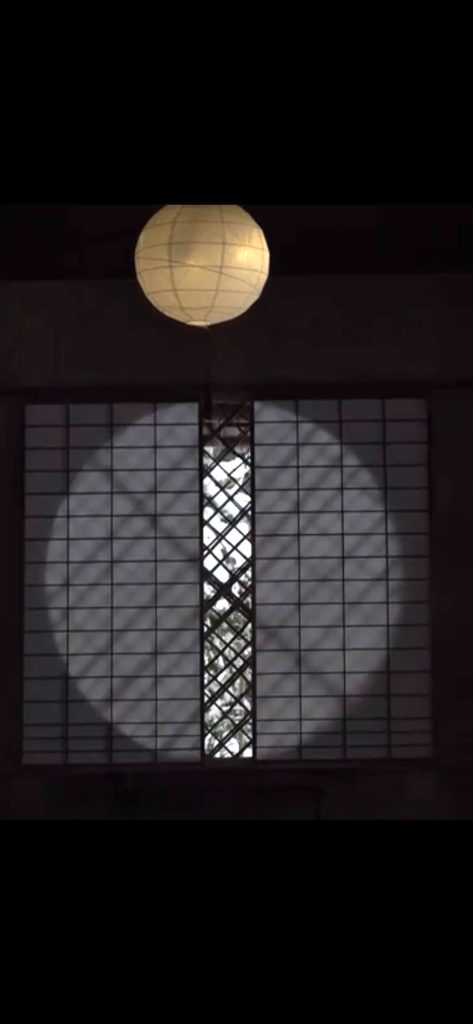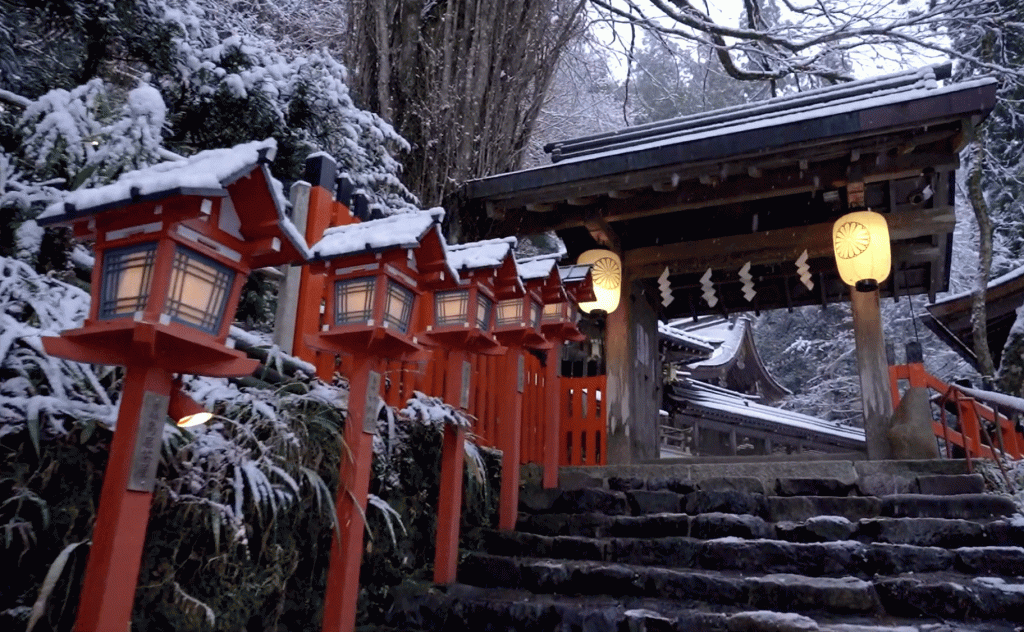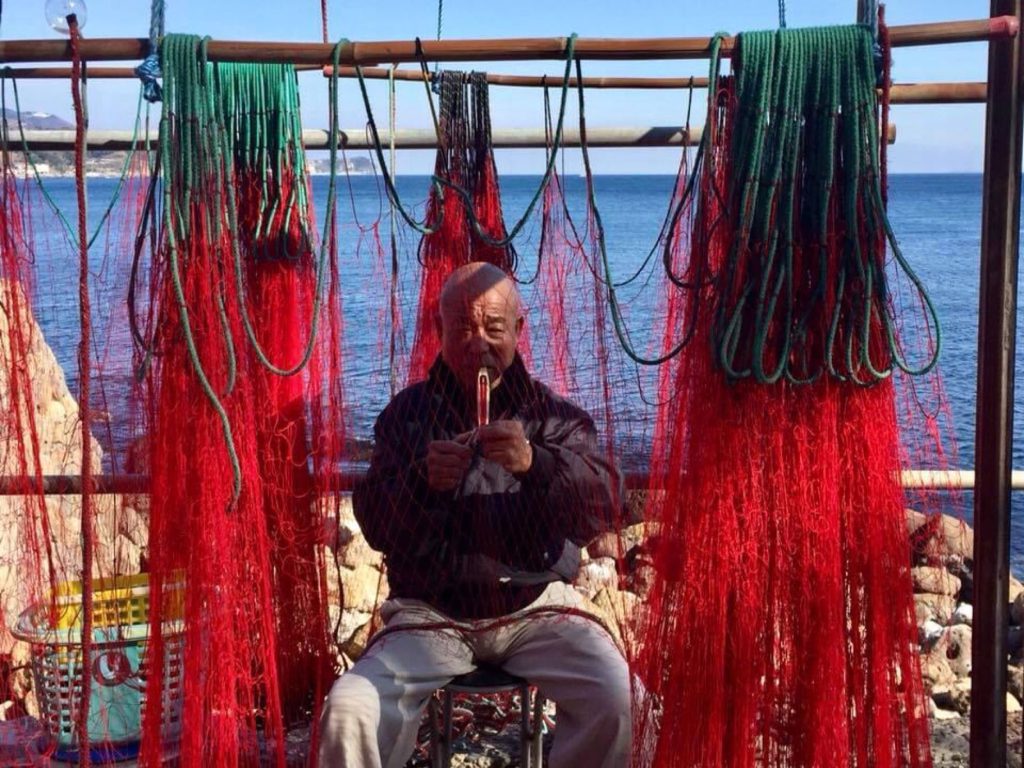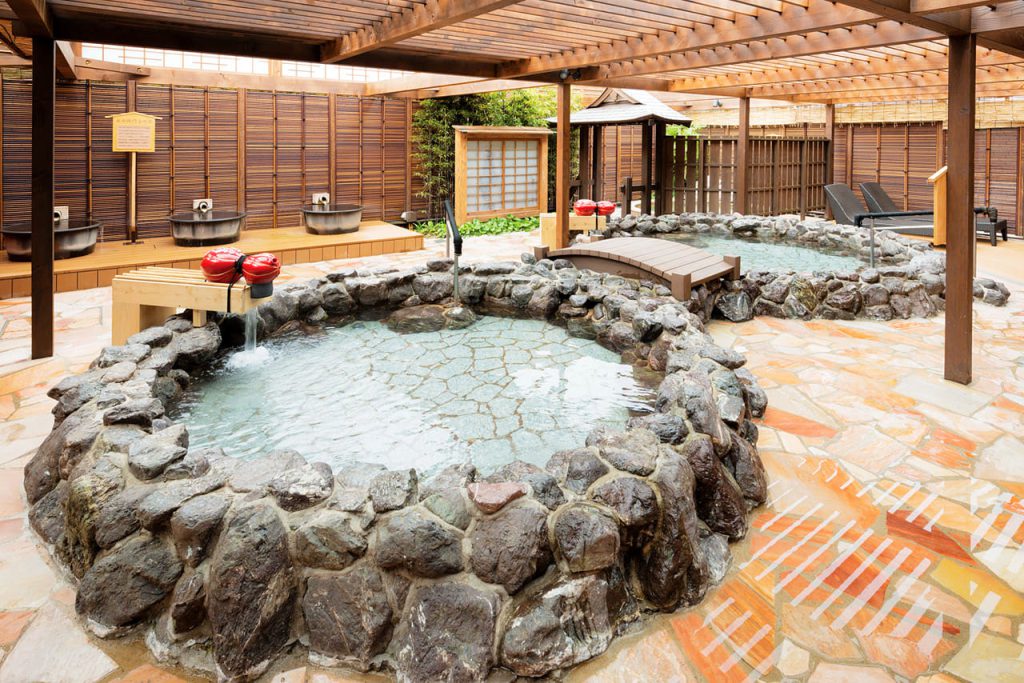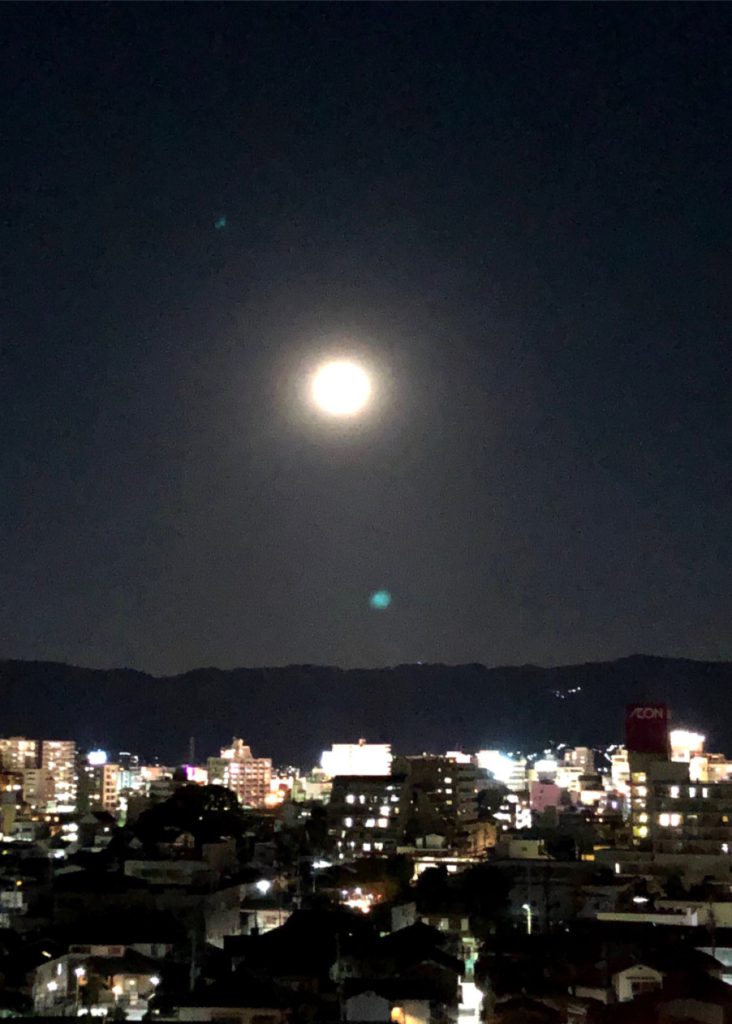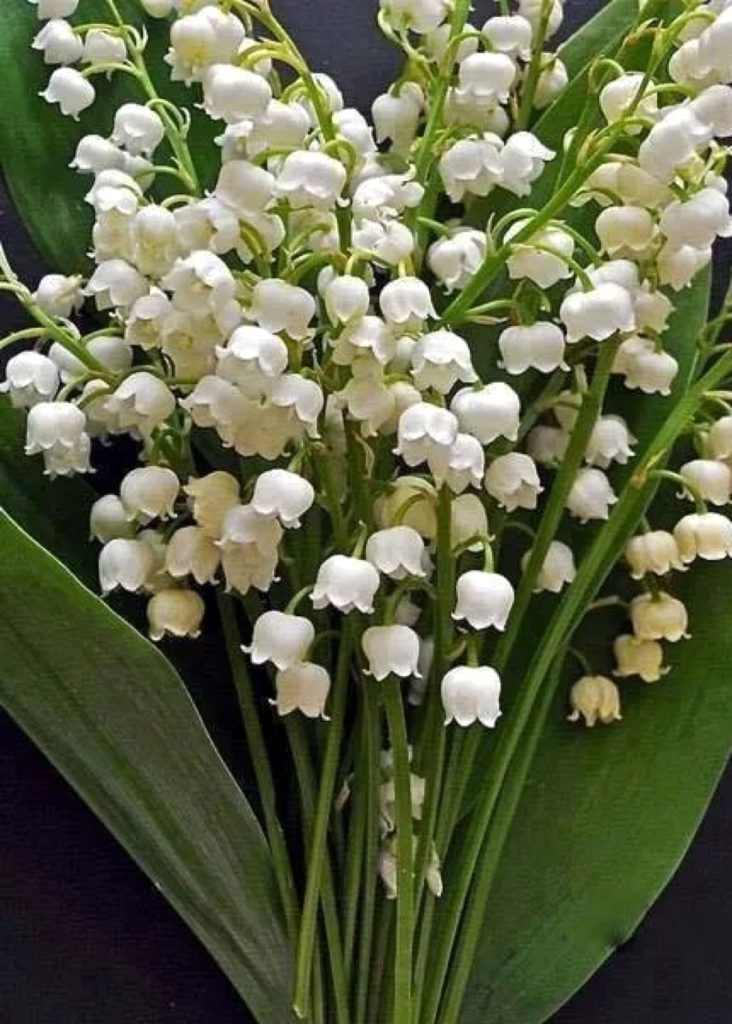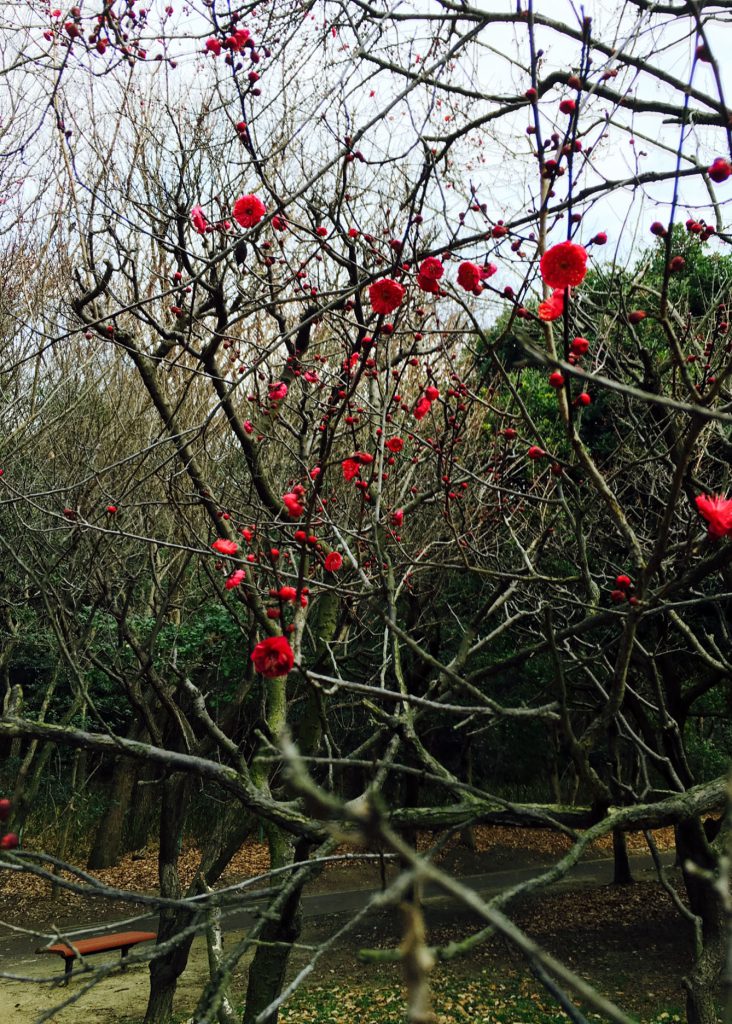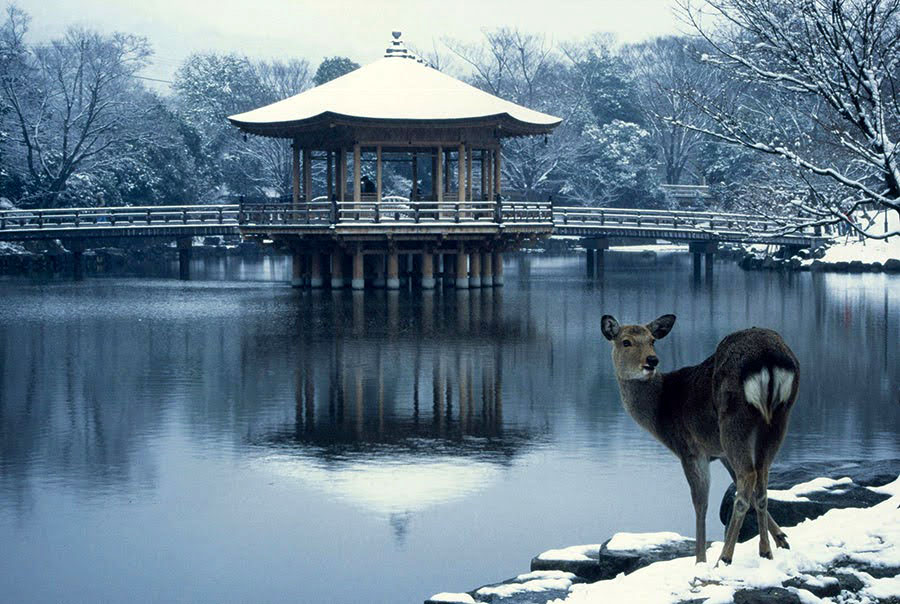
“Sagiike pond” is located on the south side of Nara Park, near Tobihino Field. In the center of the pond, there is an elegant cypress-roofed hall called “Ukimi-do hall” in the octagonal style (hexagon). Due to the recent cold weather, the hall is covered with snow and is reflected in the “Sagiike” covered with thin ice. The cherry blossoms that bloom around the pond in the spring, the crape myrtle that blooms around the pond in the summer, and the colors of the autumn leaves that spread throughout the pond in the fall are very beautiful. In addition, there is Kataoka Bairin nearby, and about 250 plum trees planted around “Enmokutei hall” are beginning to open buds.
奈良公園の南側、飛火野にほど近い位置に「鷺池」があります。その池の中央部には「浮御堂」と呼ばれる八角堂形式(六角形)で檜皮葺きの立派なお堂が浮かんでいます。このところの冷え込みでお堂は雪に覆われ、薄氷が張った「鷺池」に朧に映っています。春には周辺に咲く桜、夏には池の周囲に咲く百日紅、また秋には全体に広がる紅葉の色彩が池に照り映えるお堂の姿は非常に美しいものです。また近くには片岡梅林があり、「円窓亭」を取り囲むように植えられた250本ほどの梅がぼつぼつ蕾を開き始めています。

